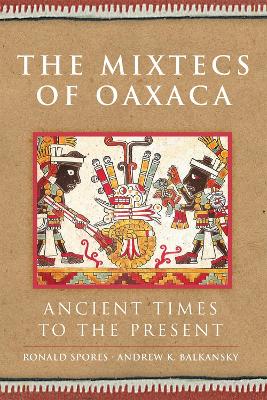The Civilization of the American Indian
1 total work
The Mixtec peoples were among the major original developers of Mesoamerican civilization. Centuries before the Spanish Conquest, they formed literate urban states and maintained a uniquely innovative technology and a flourishing economy. Today, thousands of Mixtecs still live in Oaxaca, in present-day southern Mexico, and thousands more have migrated to locations throughout Mexico, the United States, and Canada. In this comprehensive survey, Ronald Spores and Andrew K. Balkansky - both preeminent scholars of Mixtec civilization - synthesize a wealth of archaeological, historical, and ethnographic data to trace the emergence and evolution of Mixtec civilization from the time of earliest human occupation to the present.
The Mixtec region has been the focus of much recent archaeological and ethnohistorical activity. In this volume, Spores and Balkansky incorporate the latest available research to show that the Mixtecs, along with their neighbors the Valley and Sierra Zapotec, constitute one of the world's most impressive civilizations, antecedent to - and equivalent to - those of the better-known Maya and Aztec. Employing what they refer to as a 'convergent methodology,' the authors combine techniques and results of archaeology, ethnohistory, linguistics, biological anthropology, ethnology, and participant observation to offer abundant new insights on the Mixtecs' multiple transformations over three millennia.
The Mixtec region has been the focus of much recent archaeological and ethnohistorical activity. In this volume, Spores and Balkansky incorporate the latest available research to show that the Mixtecs, along with their neighbors the Valley and Sierra Zapotec, constitute one of the world's most impressive civilizations, antecedent to - and equivalent to - those of the better-known Maya and Aztec. Employing what they refer to as a 'convergent methodology,' the authors combine techniques and results of archaeology, ethnohistory, linguistics, biological anthropology, ethnology, and participant observation to offer abundant new insights on the Mixtecs' multiple transformations over three millennia.
